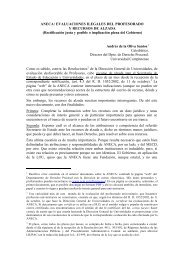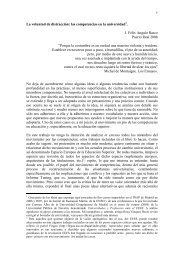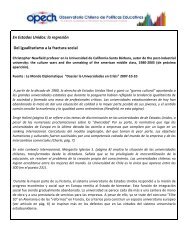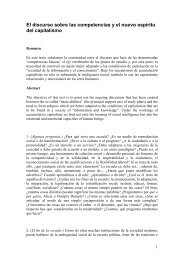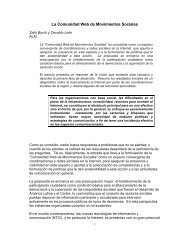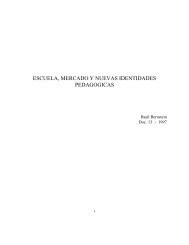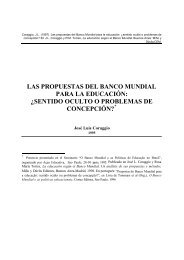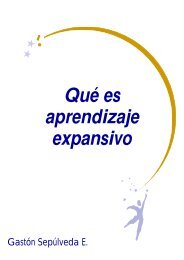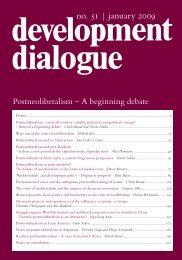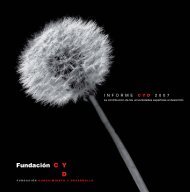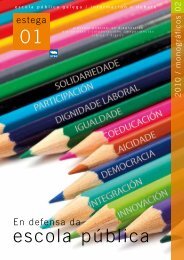Lifting the Burden: Law Student Debt as a Barrier to Public Service
Lifting the Burden: Law Student Debt as a Barrier to Public Service
Lifting the Burden: Law Student Debt as a Barrier to Public Service
You also want an ePaper? Increase the reach of your titles
YUMPU automatically turns print PDFs into web optimized ePapers that Google loves.
APPENDIX 3AMERICAN BAR ASSOCIATION FACT SHEET59Stafford Loan Program Incre<strong>as</strong>eThe rising debt burden of law graduates and o<strong>the</strong>r graduates h<strong>as</strong> a negative impact on <strong>the</strong>ability of highly qualified individuals <strong>to</strong> pursue careers in public service. A key fac<strong>to</strong>r contributing<strong>to</strong> this debt burden is <strong>the</strong> $18,500 cap ($8,500 subsidized, $10,000 unsubsidized) on<strong>the</strong> amount that graduate and professional students may borrow annually under <strong>the</strong> Staffordloan program. With tuition and living expenses for law school often far exceeding this amount,students are forced <strong>to</strong> borrow from <strong>the</strong> private commercial market at substantially higherinterest rates—incre<strong>as</strong>ing <strong>the</strong>ir <strong>to</strong>tal debt burden.Many law students graduate from law school owing $80,000 or more in loans. For lawgraduates following a standard ten-year repayment schedule, this will result in payments ofmore than $900 per month. With <strong>the</strong> median entry-level public service law salary at $35,000,<strong>the</strong>se mortgage-size debts bar most graduates from pursuing public service jobs, such <strong>as</strong>those with some government agencies or legal services programs. Among <strong>the</strong> graduates whodo take such positions, many are forced <strong>to</strong> leave after two <strong>to</strong> three years of employment.In order <strong>to</strong> help alleviate this problem, <strong>the</strong> American Bar Association recommends anincre<strong>as</strong>e from $10,000 <strong>to</strong> at le<strong>as</strong>t $30,000 in <strong>the</strong> amount of unsubsidized Stafford loans thatgraduate and professional students may borrow annually.• The current limits for graduate and professional students under <strong>the</strong> Stafford LoanProgram are insufficient. Currently, graduate and professional students may borrow$8,500 in subsidized loans and $10,000 in unsubsidized loans annually under <strong>the</strong> Staffordprogram. However, in 2002, <strong>the</strong> average private law school tuition w<strong>as</strong> $24,144, while <strong>the</strong>average annual public law school tuition w<strong>as</strong> $9,376 for residents and $18,131 for nonresidents.These amounts do not include living expenses or incidentals such <strong>as</strong> books andsupplies. Most students, <strong>the</strong>refore, must also borrow from private lenders, at much higherinterest rates, in order <strong>to</strong> meet <strong>the</strong>ir <strong>to</strong>tal cost of education.• Congress h<strong>as</strong> not adjusted <strong>the</strong> Stafford loan limit for graduate and professionalstudents in almost ten years. Through 1992, Congress regularly incre<strong>as</strong>ed <strong>the</strong> amoun<strong>to</strong>f Stafford loan funds that graduate and professional students could borrow annually atlow interest rates. However, Congress h<strong>as</strong> not adjusted that figure, set at $18,500, since1992. Meanwhile, during <strong>the</strong> period from 1992-2002, inflation h<strong>as</strong> risen 28%, while <strong>the</strong>cost of tuition for public law schools h<strong>as</strong> risen 134% (for residents) and 100% (for nonresidents)and private law school tuition h<strong>as</strong> incre<strong>as</strong>ed 76%. Consequently, <strong>the</strong> real valueof <strong>the</strong> $18,500 cap h<strong>as</strong> diminished considerably over <strong>the</strong> p<strong>as</strong>t ten years.• All graduate and professional students should be treated equally. In 1999, <strong>the</strong>Department of Education used existing statu<strong>to</strong>ry authority <strong>to</strong> raise <strong>the</strong> unsubsidizedStafford limit <strong>to</strong> $30,000 for medical students and certain o<strong>the</strong>r students in healthprofessions, including podiatry and veterinary students. That same limit should now beapplied <strong>to</strong> all graduate and professional students, because most, especially those atprivate institutions, are unable <strong>to</strong> finance <strong>the</strong>ir educations by borrowing within <strong>the</strong>annual Stafford loan limits that Congress set in 1992.• Raising <strong>the</strong> Stafford loan limit would benefit law students and o<strong>the</strong>r graduate andprofessional students who want <strong>to</strong> pursue careers in government or public service.An incre<strong>as</strong>e in <strong>the</strong> unsubsidized Stafford loan limit would benefit lower-income borrowers,such <strong>as</strong> those pursuing careers in public service, because <strong>the</strong>y could consolidate a largerportion of <strong>the</strong>ir debt, which could <strong>the</strong>n be repaid pursuant <strong>to</strong> <strong>the</strong> income-contingentrepayment option of <strong>the</strong> William D. Ford Federal Direct Loan Program.The ABA strongly supports an incre<strong>as</strong>e <strong>to</strong> at le<strong>as</strong>t $30,000 in <strong>the</strong> amount of unsubsidizedStafford loans that a graduate or professional student may borrow annually.ABA Staff Contact: Kristi Gaines, 202/662-1763February 2003Appendix



